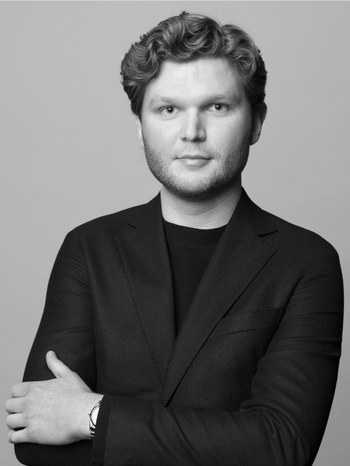Estrid Ericson
an early "Peruanska urnan" (Peruvian urn) pewter vase model "A 157", Firma Svenskt Tenn, Stockholm 1930.
Relief decoration, stamped with the angel mark and year stamp D8. Height 35 cm.
Wear, patina, and minor dents.
Literature
Monica Boman (ed.), "Estrid Ericson: orkidé i vinterlandet", Carlssons 1989, p. 28 and p. 83.
More information
The model designed ca. 1925. The prototype for this model is a Peruvian clay vessel from the late Chimú period (1150-1460) that Estrid Ericson discovered in the collections of the Ethnographic Museum, Stockholm (Inv. no. 1887.08.7221).
Designer
Interior architect and designer Estrid Ericson founded, together with Nils Fougstedt, the company Firma Svenskt Tenn in 1924. Initially, they designed innovative pewter objects and employed designers such as Björn Trägårdh, Uno Åhrén, Anna Petrus, and Tyra Lundgren. In 1927, Svenskt Tenn moved to Strandvägen in Stockholm, expanding its business to homewares, furniture, and textiles. During the first years, Åhrén and Trägårdh designed the furniture at Firma Svenskt Tenn. Still, this era ended when Estrid began her successful collaboration with Austrian architect Josef Frank in the early 1930s. Estrid Ericson had a unique position within interior design and drew inspiration from her many trips abroad.
Read more

















































